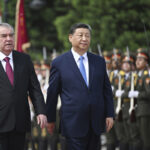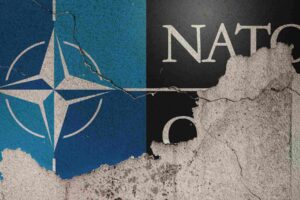“El Alto on his feet, never on his knees!” is a slogan that reflects the combative character of the inhabitants of this indigenous Aymara city in Bolivia, which since 2003, has shaped the country’s history. This city led the uprising against the privatization of natural resources in 2003, and then the defense of democracy in the face of the 2019 coup. Both struggles resulted in numerous massacres against those of El Alto who stood up to defend the country.
Located at more than 4,000 meters above sea level, it mostly comprises migrants from rural areas between La Paz and the Peruvian border. It has a population of close to 1.5 million, making it one of the largest cities in the country and a motor of economic growth. Most importantly, the city has a level of social organization and mobilization, rooted in neighborhood councils (FEJUVE) and labor unions (COR), that is able to flex its muscles to defend national interests and make its local demands known.
In many ways, the entire city is a product of neoliberalism, it’s only 38 years old and exploded in population as miners and campesinos migrated there en masse following the impoverishment of their own regions that followed the introduction of neoliberalism in the early 80s.
Speaking today, on El Alto’s 38th anniversary, President Luis Arce himself highlighted this characteristic of the inhabitants of one of the youngest cities in Bolivia, in his 38 years of life.
“I remember in 2003, during the famous Gas War (against privatization), the October Agenda (for nationalization and a new constitution) was proposed here (..) little by little, that dream became a reality with the nationalization of natural resources, the Constituent Assembly, and many other things that were born in October 2003 that we’ll always have in our memory”.
In 2003, the neoliberal regime killed more than 67 protesters in El Alto and left more than 400 wounded by gunshot. During that struggle, the people of El Alto shut down the city by erecting barricades across almost every street, the aim was to stop the sale of Bolivian gas to Chile, the central gas plant was located in El Alto, so this was an effective measure.
The military intervention to break this strike, and thereby facilitate fuel shipments to La Paz, in what was called “the convoy of death”, ended with several deaths as soldiers fired at unarmed protesters with machine guns.
Despite the massacre, protests continued, and the regime of then-President Gonzalo Sánchez de Lozada was overwhelmed. He fled to the United States, where he is a citizen and protected by Washington. His Vice-President, Carlos Mesa (now the main opposition leader against President Lusi Arce) assumed power. His regime could not last long, he resigned in 2005 as El Alto and the rest of the country refused to give up their demand for the nationalization of natural resources.
Mesa’s resignation led to new elections in which Evo Morales won his first term and delivered nationalization and a new constitution, and together with his Economy Minister Luis Arce, built the state-led model of economic development that led Bolivia into becoming the fastest growing economy in the region.
2019 Coup
When the US-backed coup of 2019 took place, El Alto once again demonstrated its commitment to democracy and national sovereignty. Social movements of El Alto immediately organized to construct barricades across the city to stop the far-right Jeanine Áñez from declaring herself President.
Once again, these mobilizations in El Alto stopped fuel shipments from leaving the central gas plant in the district of Senkata. In response, Áñez approved the so-called “decree of death” which exempted military personnel from any criminal liability, this was in order to give soldiers the green light to kill protesters.
On the 19th of November, the regime killed 11 protesters in Senkata, El Alto, then a further 11 in a separate massacre in the city of Sacaba. Protests returned to El Alto a year later when the Anez regime attempted to suspend the scheduled elections in order to cling onto power. El Alto, and the rest of Bolivia, went out on strike and paralyzed the country to demand elections.
The regime was forced to accept elections in October 2020, and those elections were won by President Luis Arce and the Movement Towards Socialism (MAS) with 55% of the vote. In El Alto, more than 70% of voters backed the MAS. Since the, President Arce has reactivated spending on infrastructure and public services in El Alto, something that was cut during the neoliberal Añez regime.
Source: znetwork
















